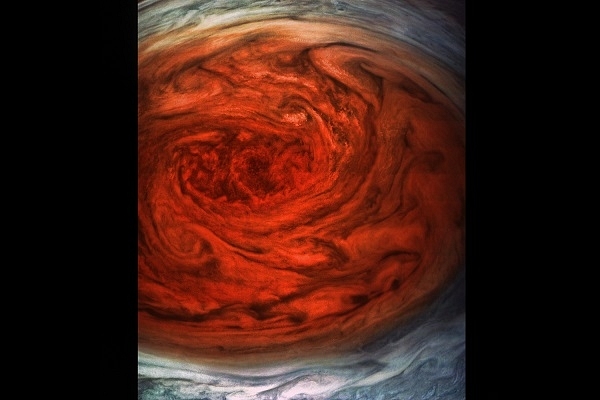Insta
When NASA’s Juno Stared Right Into Jupiter’s Angry Red Eye

Zooming in on Jupiter’s Great Red Spot (danielcorttez)
The first ever close-up images of Jupiter's gargantuan hurricane, the Great Red Spot, have been revealed from National Aeronautics and Space Administration's Juno spacecraft after it completed its historic flyby a few days ago.
The pictures reveal a tangle of dark, veinous clouds weaving their way through a massive crimson oval. The JunoCam imager aboard NASA's Juno mission snapped pictures of the most iconic feature of the solar system’s largest planetary inhabitant during its Monday (10 July) flyby.
“For hundreds of years, scientists have been observing, wondering and theorizing about Jupiter’s Great Red Spot,” said Scott Bolton, Juno principal investigator from the Southwest Research Institute in San Antonio. “Now we have the best pictures ever of this iconic storm. It will take us some time to analyze all the data from not only JunoCam, but Juno’s eight science instruments, to shed some new light on the past, present and future of the Great Red Spot.”
Measuring in at 10,159 miles (16,350 kilometres) in width (as of 3 April 2017), Jupiter's Great Red Spot is 1.3 times as wide as Earth. The storm has been monitored since 1830 and has possibly existed for more than 350 years. In modern times, the Great Red Spot has appeared to be shrinking.
Juno launched on 5 August 2011, from Cape Canaveral, Florida. During its mission of exploration, Juno soars low over the planet's cloud tops – as close as about 2,100mi (3,400km). During these flybys, Juno is probing beneath the obscuring cloud cover of Jupiter and studying its auroras to learn more about the planet's origins, structure, atmosphere and magnetosphere.
Early science results from NASA's Juno mission portray the largest planet in our solar system as a turbulent world, with an intriguingly complex interior structure, energetic polar aurora and huge polar cyclones.
Juno's next close flyby of Jupiter will occur on 1 September.
With Inputs From ANI.
Support Swarajya's 50 Ground Reports Project & Sponsor A Story
Every general election Swarajya does a 50 ground reports project.
Aimed only at serious readers and those who appreciate the nuances of political undercurrents, the project provides a sense of India's electoral landscape. As you know, these reports are produced after considerable investment of travel, time and effort on the ground.
This time too we've kicked off the project in style and have covered over 30 constituencies already. If you're someone who appreciates such work and have enjoyed our coverage please consider sponsoring a ground report for just Rs 2999 to Rs 19,999 - it goes a long way in helping us produce more quality reportage.
You can also back this project by becoming a subscriber for as little as Rs 999 - so do click on this links and choose a plan that suits you and back us.
Click below to contribute.
Latest